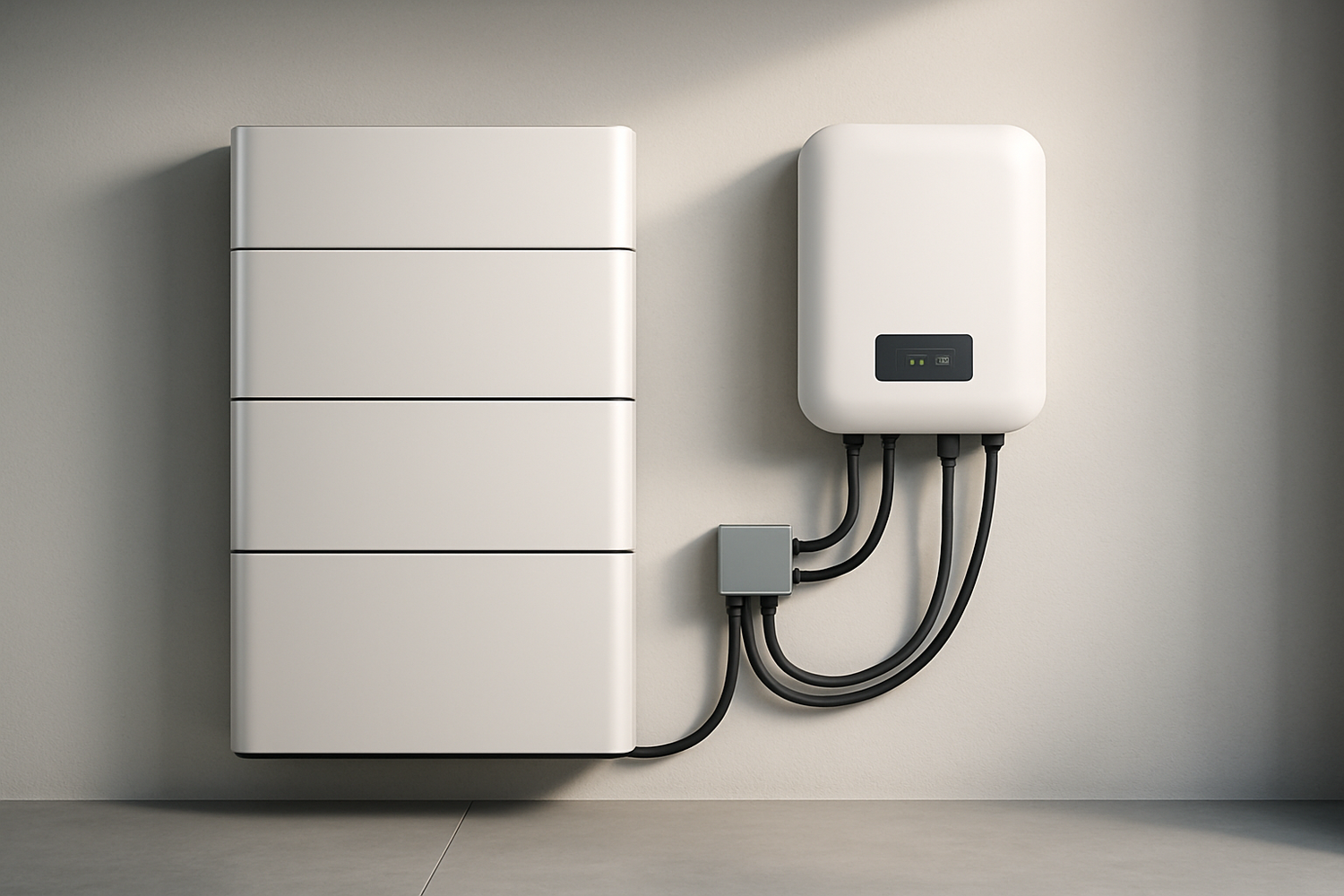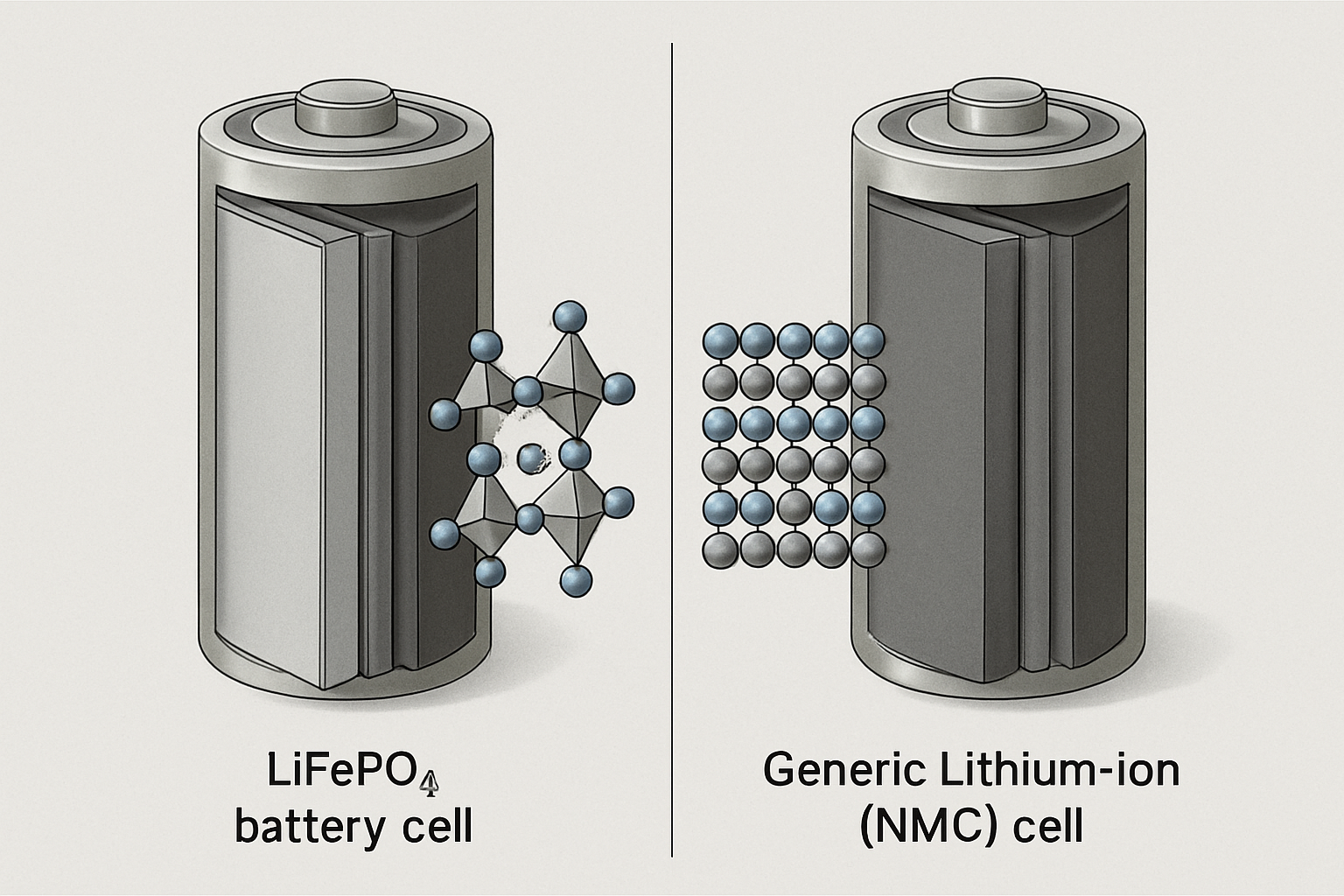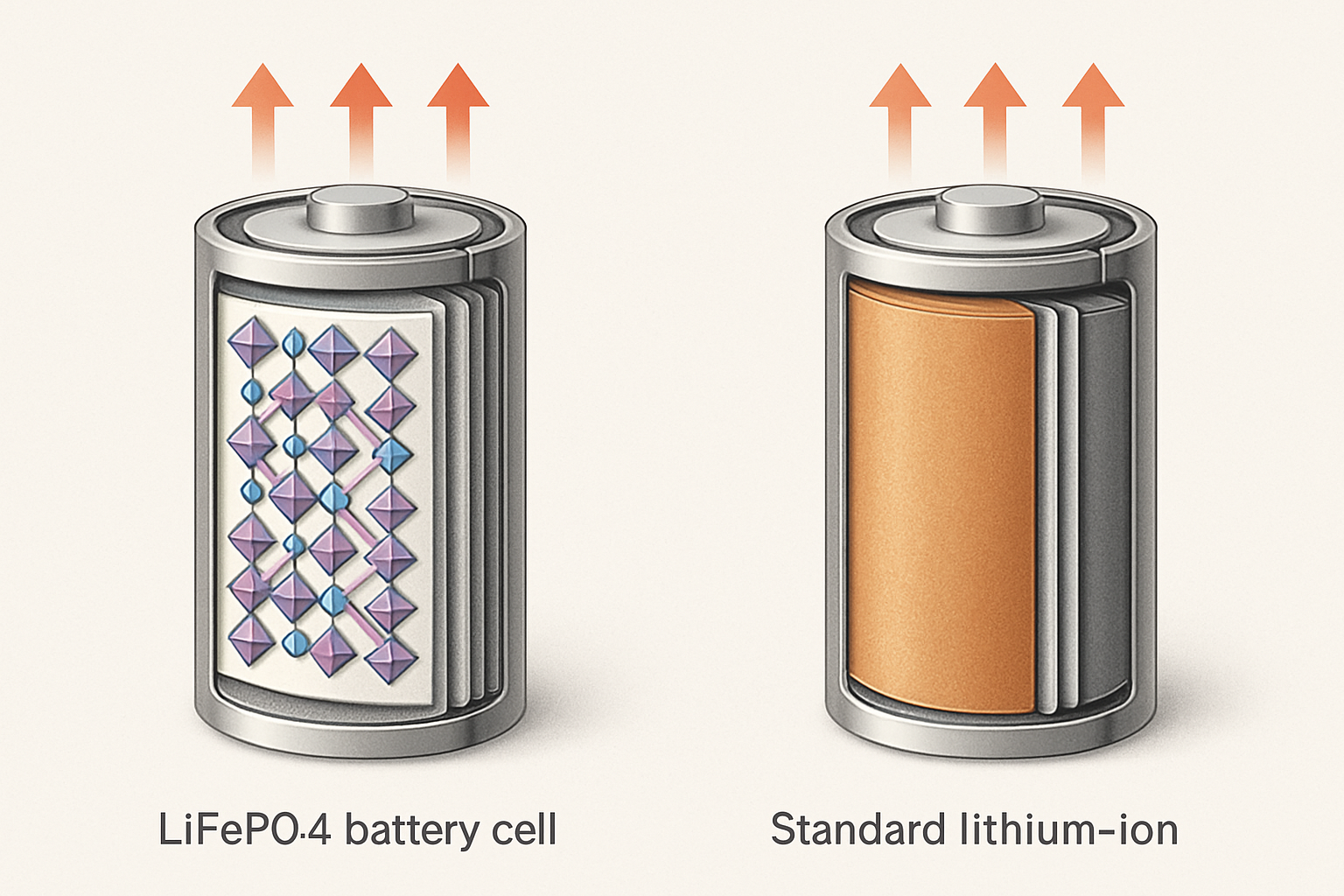Home energy storage is rapidly shifting from a niche technology to a cornerstone of modern energy independence. With a reliable home battery, you gain control over your power, ensuring stability during grid outages and maximizing the value of a solar panel system. Lithium-ion technologies lead this charge, but not all lithium batteries are created equal. This article provides a clear framework for choosing the right lithium battery, focusing on the critical factors that ensure a safe, durable, and cost-effective home energy storage solution.
Understanding the Core Technologies: LiFePO4 vs. Other Lithium-Ion
The first step in your selection process is to recognize the key chemical differences within the lithium-ion family. For home storage, the most important comparison is between Lithium Iron Phosphate (LiFePO4) and other chemistries like Nickel Manganese Cobalt (NMC). While both are powerful, their internal structures lead to significant performance variations.
Safety First: The Chemical Stability Advantage
The primary consideration for any device installed in your home is safety. LiFePO4 batteries have an intrinsic safety advantage due to their exceptionally stable chemical structure. The phosphate-based cathode material is much less prone to thermal runaway—a dangerous condition where a battery overheats uncontrollably. In contrast, NMC chemistries, while energy-dense, can be more volatile and may release oxygen if compromised, potentially fueling a fire. For stationary home energy storage, the robust safety profile of a 12v 100ah LiFePO4 lithium battery makes it a preferred technology. Adherence to strict safety standards, such as UL 9540A, provides third-party validation that a battery system is designed to prevent fire propagation.
Lifespan and Durability: A Long-Term Perspective
A home energy storage system is a long-term investment, and its lifespan is a critical metric. This is where LiFePO4 technology truly excels. A typical LiFePO4 battery pack can deliver between 3,000 and 7,000 charge-discharge cycles, whereas NMC batteries generally offer 1,000 to 2,000 cycles. This extended cycle life means a LiFePO4 battery can last well over a decade in a daily use scenario. Furthermore, as detailed in the ultimate reference on solar storage performance, factors like Depth of Discharge (DoD) significantly impact longevity. LiFePO4 batteries can be regularly discharged to 90-100% of their capacity with minimal degradation, a stark contrast to other types that require shallower discharges to preserve their health.
Performance Under Real-World Conditions
Home batteries must perform reliably across various temperatures and conditions. LiFePO4 batteries demonstrate consistent output in both hot and cold environments, making them suitable for installations in garages or basements that are not climate-controlled. While NMC batteries offer higher energy density—meaning they are lighter and more compact for the same capacity—this is a more critical factor for electric vehicles than for a stationary home battery storage system. For home applications, the slight increase in size for a LiFePO4 system is a minor trade-off for major gains in safety and lifespan.
Key Specifications to Evaluate for Your Home
Once you understand the chemistry, the next step is to match the battery's specifications to your household's unique energy profile. This involves looking beyond brand names and focusing on the technical data.
Calculating Your Energy Needs: Capacity and Power Rating
Two of the most important specifications are capacity and power rating.
- Capacity (kWh): This measures how much energy the battery can store. It determines how long you can run your appliances. To estimate your needs, identify essential loads (like a refrigerator, lights, and internet router) and calculate their total daily energy consumption. For example, running 5 kWh of essential appliances for 10 hours requires 5 kWh of storage.
- Power Rating (kW): This measures how much electricity the battery can deliver at once. It determines how many appliances you can run simultaneously. A high power rating is needed to start large appliances like an air conditioner or a well pump.
A qualified installer can perform a detailed load analysis to size your system accurately, ensuring you have enough energy and power for your needs.
Efficiency and Depth of Discharge (DoD)
Performance is also measured by efficiency. Round-trip efficiency indicates how much of the energy you store is available for later use. Modern lithium battery storage systems achieve efficiencies over 90%. Depth of Discharge (DoD) is the percentage of the battery's capacity that can be safely used. As mentioned, LiFePO4 batteries feature a DoD of up to 100%, allowing you to use nearly all the energy you've stored.
| Specification | LiFePO4 Battery | NMC Battery |
|---|---|---|
| Cycle Life | 3,000 - 7,000+ cycles | 1,000 - 2,000 cycles |
| Depth of Discharge (DoD) | 90-100% | 80-90% |
| Thermal Runaway Temp. | ~270°C (518°F) | ~210°C (410°F) |
| Safety Profile | Very High | Good (with advanced BMS) |
The Importance of the Battery Management System (BMS)
The Battery Management System (BMS) is the brain of the battery pack. This electronic system monitors key parameters like voltage, current, and temperature at the cell level. A high-quality BMS is a critical safety feature, protecting the battery from over-charging, over-discharging, and short circuits. It also optimizes performance by balancing the cells, which is essential for achieving a long and reliable service life.
System Integration and Scalability
A battery does not work in isolation. Its ability to integrate with your broader energy system and adapt to future needs is a crucial part of the selection process.
Compatibility with Inverters and Solar Panels
Your lithium battery must communicate seamlessly with your solar inverter. The inverter is responsible for converting the DC electricity from your solar panels and battery into the AC electricity used by your home. Check that the battery's communication protocol (often CAN or RS485) is compatible with your chosen inverter to ensure optimal performance and system visibility.
Planning for the Future: Modularity and Expansion
Your energy needs may change over time. You might purchase an electric vehicle or add new electrical appliances. A modular energy storage solution allows you to adapt. Many LiFePO4 home battery systems are designed to be scalable, meaning you can start with a smaller capacity (e.g., a 100ah lithium battery) and add more modules later to increase your storage.
Making an Informed Decision: Cost vs. Value
While the initial price is important, a true assessment of a battery's cost must consider its long-term value. According to a recent report from the International Renewable Energy Agency (IRENA), the costs of battery storage projects have fallen dramatically, making them more accessible than ever.
Beyond the Upfront Price: Total Cost of Ownership (TCO)
The total cost of ownership is a more accurate measure of value than the initial purchase price. This calculation considers the upfront cost divided by the total energy the battery will deliver over its lifetime. Due to their significantly longer cycle life, LiFePO4 batteries often have a much lower total cost of ownership than other chemistries. As the International Energy Agency (IEA) notes, falling battery costs are rapidly improving the competitiveness of storage applications. A higher initial investment in a durable LiFePO4 battery can result in greater savings over 10-15 years.
Warranty and Manufacturer Support
A strong warranty reflects a manufacturer's confidence in its product. For home energy storage, look for a warranty of at least 10 years that guarantees a certain capacity retention (e.g., 70% capacity after 10 years or a specific number of cycles). Reliable support from established lithium battery manufacturers is also invaluable for troubleshooting and service.
A Practical Summary for Your Selection
Choosing the right lithium battery for your home is a decision that balances technology, performance, and long-term value. For most home energy storage applications, a LiFePO4 battery offers a superior combination of safety, longevity, and performance, making it a sound investment in your energy independence. By carefully evaluating your energy needs, checking key specifications, and planning for future integration, you can select a system that provides reliable, clean power for years to come.
Disclaimer: This information is for educational purposes only and does not constitute financial or investment advice. Consult with a qualified professional before making any decisions regarding your energy system.
Frequently Asked Questions
What is the main difference between a LiFePO4 battery and other lithium-ion batteries for home use?
The primary difference lies in safety and lifespan. LiFePO4 (Lithium Iron Phosphate) batteries use a more stable chemistry that is far less prone to overheating. They also typically offer a much longer cycle life, often lasting several thousand cycles more than other lithium-ion types like NMC, making them better suited for the daily charging and discharging of a home energy storage system.
How do I calculate the right battery size for my home?
To size your battery, first list the essential appliances you want to power during an outage and their hourly energy consumption (in watt-hours). Multiply this by the number of hours you need backup power to get the total energy required in kWh. It is also important to consider the peak power draw (in kW) of all appliances running simultaneously. A professional installer can perform a detailed load calculation for accuracy.
Can I add more batteries to my system later?
Yes, if you choose a modular system. Many modern LiFePO4 home energy storage systems are designed for scalability. This allows you to start with a capacity that fits your current budget and energy needs, and then add more battery modules in the future as your requirements grow.





Leave a comment
All comments are moderated before being published.
This site is protected by hCaptcha and the hCaptcha Privacy Policy and Terms of Service apply.